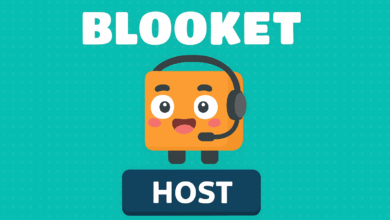The Ultimate Guide to Being a Gimkit Host: Tips, Features, and Best Practices

The evolving landscape of digital education, interactive learning tools have revolutionized how educators engage with students. One of the standout platforms in this space is Gimkit, an innovative game-based learning system that brings quizzes to life. At the heart of this system is the Gimkit host, the person responsible for launching, managing, and customizing games to maximize student participation and educational impact.
But what does it mean to be a successful Gimkit host? Whether you’re a teacher, tutor, or even a student leading a review session, hosting on Gimkit involves more than just starting a game. This article will explore the role of a Gimkit host in depth—highlighting key responsibilities, features, strategies, and tips to help you get the most out of the platform.
What Is Gimkit?
Before diving into the host’s role, let’s briefly discuss what Gimkit is. Developed by a high school student in 2017, Gimkit is a classroom game-show platform where students answer questions to earn virtual money. Unlike traditional quiz tools, Gimkit allows players to reinvest their earnings to power up their gameplay, adding a unique economic element to the learning experience.
Gimkit supports various game modes and integrates with tools like Google Classroom, making it a favorite for teachers looking to make lessons more engaging. The platform also allows for asynchronous and live play, offering flexibility for both in-person and remote classrooms.
Who Can Be a Gimkit Host?
The Gimkit host is typically the person who creates and controls the game session. In most educational settings, this is the teacher. However, any user with a Gimkit account—students included—can technically host a game, especially for collaborative or peer-to-peer learning scenarios.
Core Responsibilities of a Gimkit Host
1. Creating or Selecting Kits
A “Kit” is Gimkit version of a quiz or question bank. As a host, you can create your own Kit from scratch or import one from the platform’s public library. You’ll need to ensure your questions are accurate, relevant, and formatted correctly to maintain the game’s educational value.
2. Choosing the Right Game Mode
Gimkit offers a variety of game modes like “Classic,” “Trust No One” (inspired by Among Us), “The Floor is Lava,” and more. Each mode has a different set of rules and objectives. As a host, selecting the right mode based on your learning goals and class dynamics is essential.
3. Customizing Game Settings
Before launching a game, the host can adjust various settings, such as:
-
Game duration
-
Target earnings
-
Power-up availability
-
Question shuffling
-
Player name requirements
This level of customization ensures that the game fits the lesson plan and class needs perfectly.
4. Launching and Monitoring the Game
Once everything is set, the host launches the game and shares the unique join code with participants. During the game, the host can monitor player performance in real-time, pause the game if needed, and even end it early based on classroom dynamics.
5. Analyzing Game Reports
After the game ends, Gimkit generates a detailed report that includes:
-
Player performance
-
Most missed questions
-
Accuracy rates
This data is invaluable for identifying learning gaps and adjusting future lessons.
Tips for Being an Effective Gimkit Host
1. Start with a Warm-Up Round
If it’s your class’s first time playing Gimkit, consider starting with a short, low-stakes round to get everyone comfortable with the interface.
2. Align Kits with Curriculum Goals
Make sure the questions you include reinforce your lesson objectives. Random trivia might be fun, but it’s less effective for reinforcing key academic concepts.
3. Use Game Modes Strategically
Not all modes are equally suited to all types of content. For example, use the Classic mode for serious review sessions and more interactive modes like “Fishtopia” for end-of-week fun.
4. Encourage Collaboration
Some modes allow for team-based play. Leveraging this feature promotes collaboration and can reduce pressure on individual students who might struggle with timed quizzes.
5. Monitor Engagement
Watch how your students are interacting with the game. Are they invested? Confused? Bored? Your real-time observations can guide how you use Gimkit moving forward.
Hosting Gimkit Remotely
The ability to host Gimkit games online makes it an ideal tool for remote learning. Simply share the game code via your preferred communication tool (Zoom, Google Meet, Microsoft Teams), and students can join from anywhere. Make sure to share your screen if you want students to see live rankings and game progress.
Premium Features for Gimkit Hosts
While Gimkit offers a free version with core functionalities, upgrading to Gimkit Pro unlocks premium features like:
-
Unlimited Kit creation
-
Advanced analytics
-
Exclusive game modes
-
Audio uploads for language learning
For frequent hosts, the investment in a Pro plan often pays off through enhanced control and deeper insights.
Read More: https://www.microsoft.com/ink: Microsoft Ink and the Future of Digital Creativity
Conclusion
Being a Gimkit host is more than just clicking “start” on a game. It’s about curating content, managing the classroom experience, analyzing outcomes, and above all, creating a fun and effective learning environment. With the right strategies and understanding of the platform’s features, anyone can become a successful Gimkit host—bringing energy, engagement, and educational value to every session.
Whether you’re new to the platform or a seasoned pro, mastering the art of hosting on Gimkit can transform the way your students interact with content. So log in, build your kit, and let the games begin!



